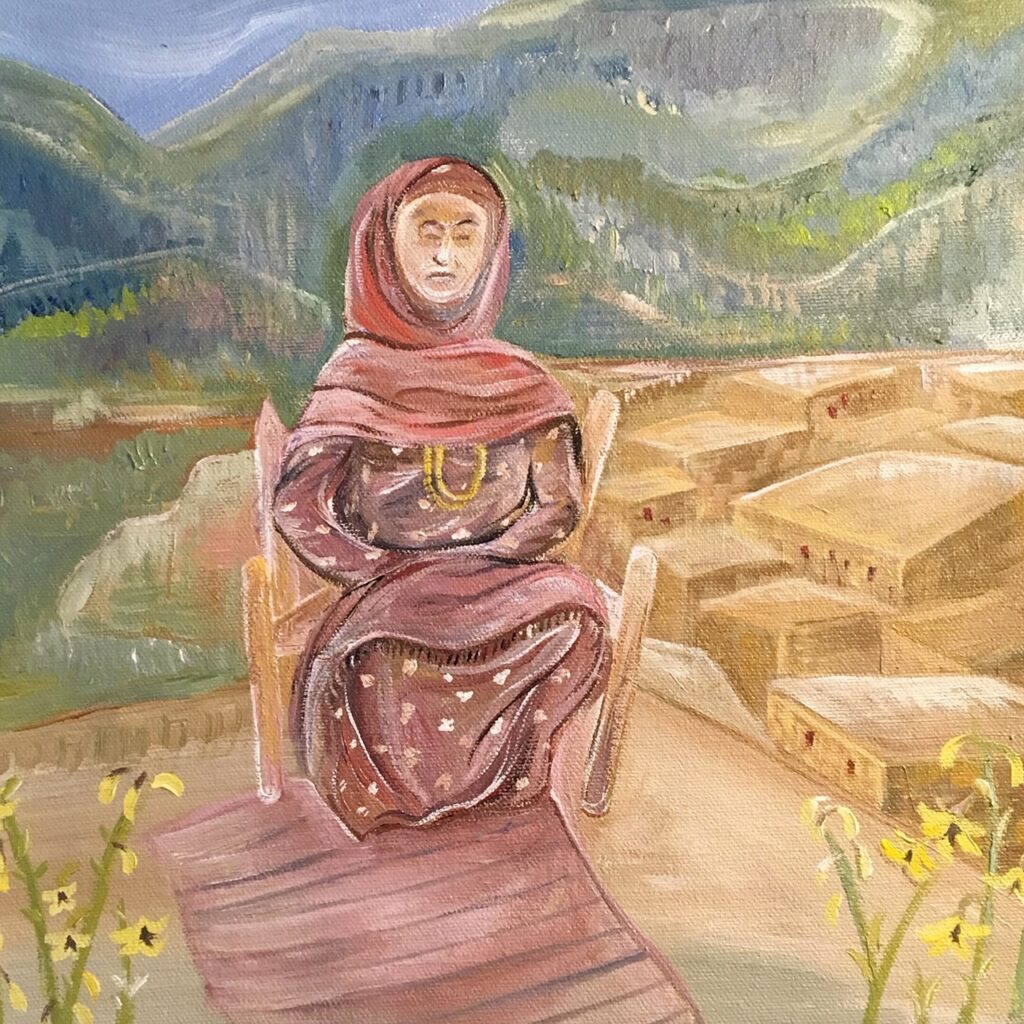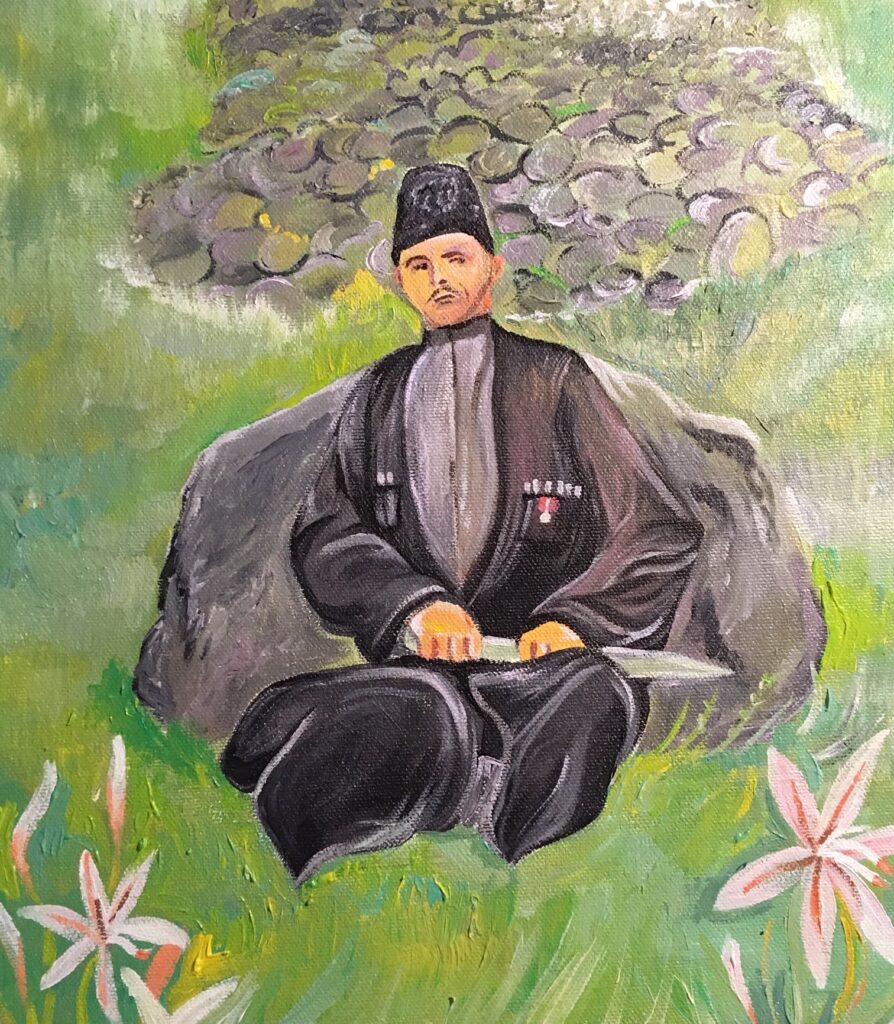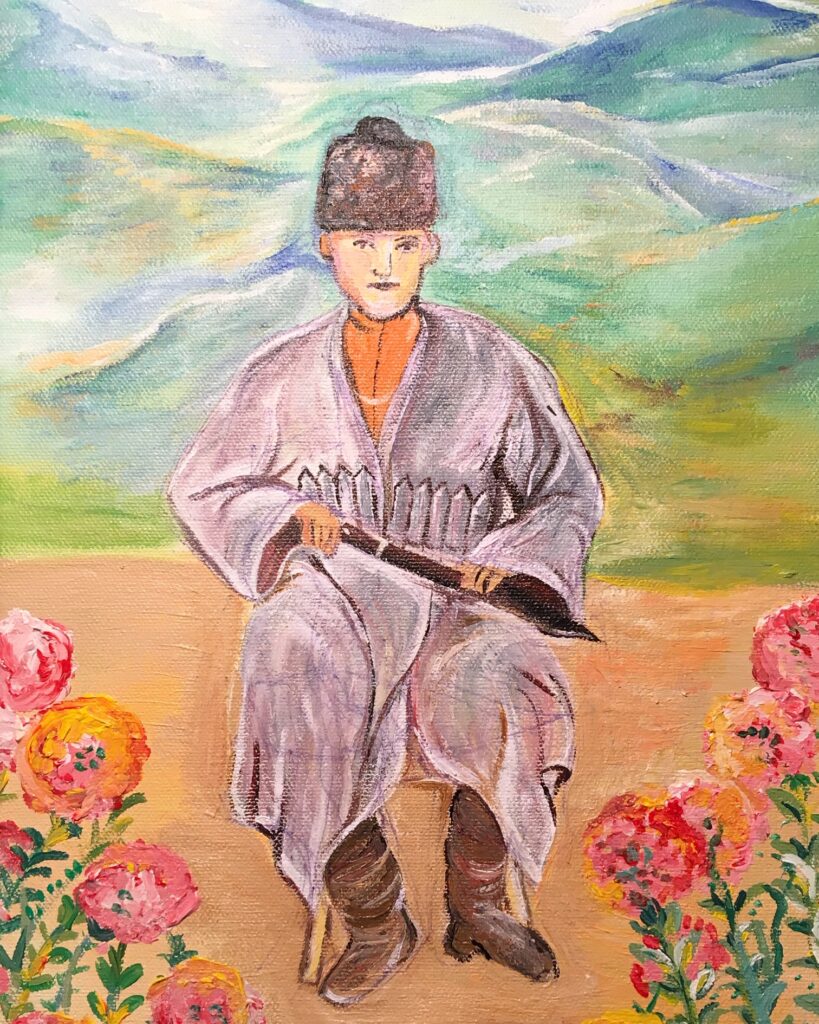
9.5 x 12.5 inches

9.5 x 12.5 inches

9.5 x 12.5 inches

9.5 x 12.5 inches
The Caucasus Mountains are home to over fifty ethnic groups as well as the world’s most unique and endemic plant species. I haven’t been to the Caucasus Mountains but I’ve spent time in both Russia and Turkey, and have seen the Caucasian influence on culture. The geography of the mountains is ingrained in the national imagination of both countries.
Sergey Mikhaylovich Prokudin-Gorsky (1863 – 1944) is a Russian photographer that traveled the Russian Empire at the turn of the century in a railroad-car darkroom, taking some of the very first color photographs. The most captivating to me are his photos of the Caucases Mountains and Dagestani people in national dress. There is a different concept of “national dress” in Russia that would be considered ethnicization in the US. Dagestan is Russia’s most heterogeneous republic and frequently politicized. I try to educate and appreciate without romanticizing. Prokudin-Gorsky’s photos depict a rich culture worth preserving, marred by assimilation, unrest, and islamophobia.
The struggle to preserve the traditions of indigenous ethnic groups mirrors the complexity to conserve the biodiversity in a threatened ecosystem. Connecting with people through ecology is difficult in our post-industrial world. We need to be routinely reminded that we inhabit a natural world. We restore our humanity, past and present, through preservation of the environment.
These four portraits are recreations of Prokudin-Gorsky’s photographs, bordered by flowers, many which are restricted to the region, found nowhere else. Using flora and fauna as a way to learn and imagine how people interact with the world is radical, vital, and a return to the roots.